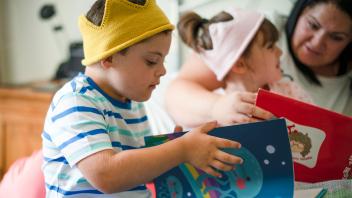Even at 50 years old, Harriet can rankle readers. All students of children’s literature (in fact anyone interested in children’s literature) should meet her — even those who first encountered Harriet when they were children. The 1960s were turbulent; change was everywhere — including in books for children. First published in 1964, Harriet the Spy marked a sea change in the direction of juvenile fiction. Some people loved it, others had an equally strong and opposite reaction to the book. In case you don’t know the story, it’s about 11-year old Harriet Welsh who keeps copious, brutally truthful notes as she surreptitious observes (as a spy) friends and strangers alike. When her classmates find and read Harriet’s journal, they shun her completely, an isolation compounded by the loss of Harriet’s long-time nanny, Ole Golly. Harriet introduces children to the messy adult world, one in which adults can be clueless (including Harriet’s parents) and have problems of their own; where class distinctions have an impact on people’s behavior and more. The book also lets kids glimpse the difference between diplomacy and deceit. Consider this excerpt from the letter Ole Golly writes to Harriet in which she helps Harriet mend fences:
Naturally you put down the truth in your notebooks. What would be the point if you didn’t? And naturally those notebooks should not be read by anyone else, but if they are, then Harriet, you are going to have to do two things, and you don’t like either one of them: 1. You have to apologize. 2. You have to lie. Otherwise you are going to lose a friend. Little lies that make people feel better are not bad, like thanking someone for a meal they made even if you hated it, or telling a sick person that they look better when they don’t … but to yourself you must always tell the truth.
Children learn this as they mature, but Ole Golly puts it out there explicitly — right along with other adult imperfections and flaws. In honor of this anniversary, Louise Fitzhugh’s Harriet the Spy (Delacorte) has been reissued with brief essays by well-known people involved in children’s literature and selected correspondence from the publisher to the author. They make it clear that Harriet has had an impact regardless of when they met her. She’s one of a kind, Harriet is. And she helped change the way we look at what’s appropriate in books for children.
About the Author
Reading Rockets’ children’s literature expert, Maria Salvadore, brings you into her world as she explores the best ways to use kids’ books both inside — and outside — of the classroom.

